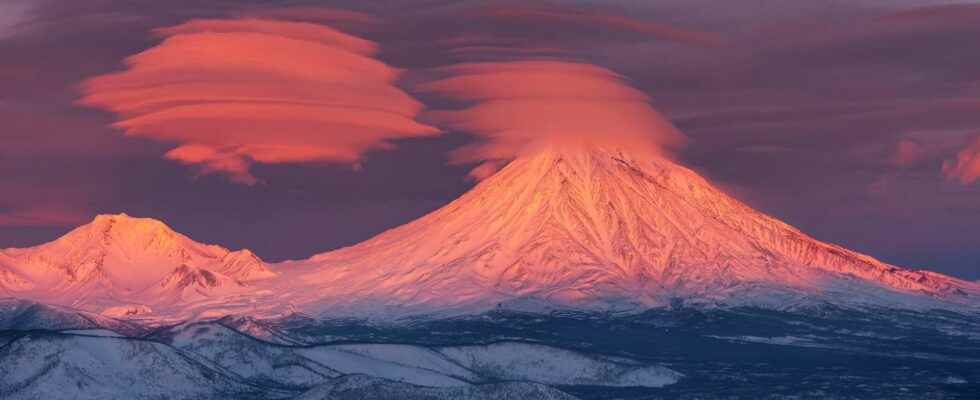You will also be interested
[EN VIDÉO] The fascinating world of clouds Look at the clouds passing: it comes in all shapes. Here we show you some of them, which reside on different “floors”, as meteorologists say.
The lenticular are wave clouds that can take very amazing shapes. Some are in the shape of plates, sometimes stacked on top of each other, others are very stretched in length and look like thin strips, but the most spectacular look like machines from another world. The name “lenticular” comes from “lenses”, in reference to their shape. These pretty clouds that we mainly encounter in the mountains can be present in isolation or in hundreds. They can range from appearing tiny and uninteresting to huge and awe-inspiring, particularly at sunset. Sun.
A cloud that constantly forms and deforms
It is created in fine, very dry weather when the weather conditions winds are gathered at altitude, all over the world. This wave cloud appears above the mountain peaks, but also nearby. It is in fact shaped by the wind which circulates above the reliefs: even if the wind is calm in the valley or on the slope of the mountain where you are, the presence of a lenticular cloud indicates that it there are strong currents at altitude.
It is necessary that the speed the wind reaches at least 50 km/h at altitude, so that this cloud appears between 2 and 7 kilometers in altitude. This altocumulus lenticularis, from its scientific name, aligns itself at the top of each wave (the currents) which takes shape by bouncing above the mountains or hills. L’air descends and rises alternately downstream of the obstacle, which creates a standing wave. As the air rises, the water vapor it contains turns into water droplets that make up the cloud.
It is a cloud construction permanent, which forms and deforms permanently: it is therefore both immobile (because it does not move, or very little), but its form is always in movement. This type of cloud is indeed shaped like pottery by the currents that circulate. On the other hand, wave clouds, like lenticulars, do not give any precipitation. Aircraft pilots generally try to avoid them because the presence of these clouds indicates that the currents aloft are very strong.
Mesmerizing timelapse of a lenticular cloud hovering over Mount Teide in the Canary Islands as day turns to night, captured by photographer Bartosz Wojczyński.pic.twitter.com/1eLRYGWWsu
— Wonder of Science (@wonderofscience) July 20, 2022
Grandiose lenticulars in the south-east of France
Lenticulars are very common in the south-east of France. The mistral and the tramontane can indeed generate very beautiful ones. Corsica and the Alpes Maritimes are known to be the scene of superb lenticular clouds that delight photographers.
You can also sometimes see them on the hills of the Paris region, even if they are much less impressive. Mont-Blanc is also sometimes accompanied by a lenticular, nicknamed “the Mont-Blanc donkey”.
The most beautiful, and the most numerous, occur in the American West, but also in Japan. The most famous lenticular is that of Mount Fuji in Japan, the “kasagumo” in Japanese.
Japan. Mount Fuji, enhanced by a magnificent lenticular cloud, all reflected in a rice field ????
(InstaTaitan21) pic.twitter.com/icpIYcUwuG
— Alesia Regnald ????????????ن (@wiccan_onyx) July 28, 2022
In the United States, the most spectacular is undoubtedly that of Mount Rainier, near Seattle in the state of Washington. Among other cap-shaped lenticulars is also that of Mount Kilimanjaro in Tanzania.
—
LAST DAYS to take advantage of our summer offer.
Subscribe to our media for a period of 3 months and receive the Mag Futura as a gift!*
*Offer valid for any new 3-month subscription to the “I participate in the life of Futura” offer on Patreon.
—
Interested in what you just read?
